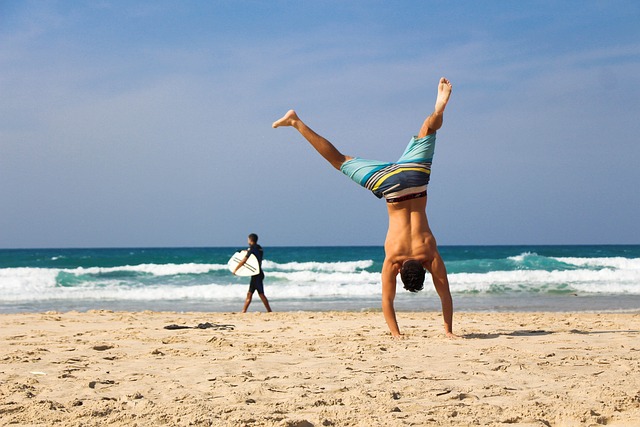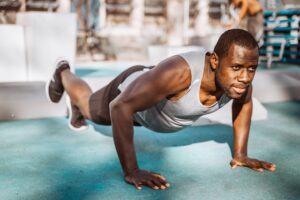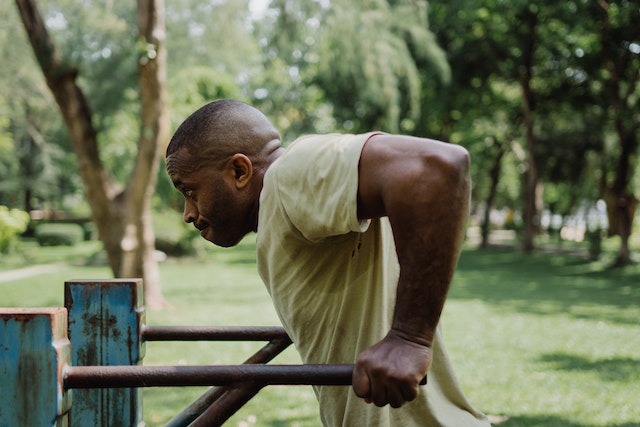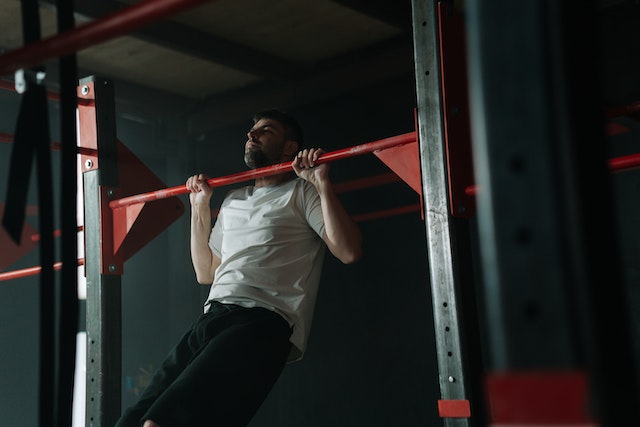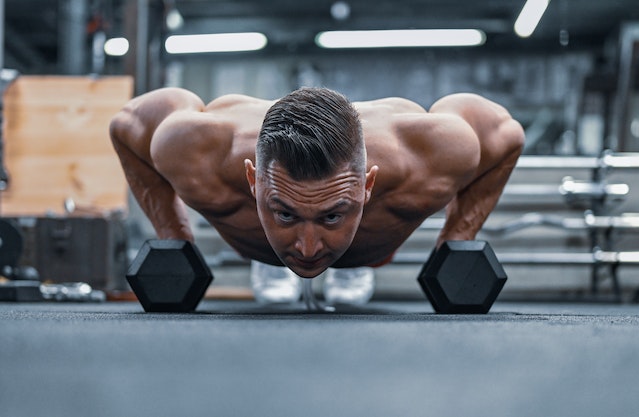Are you tired of being just another gravity-bound mortal? Are you ready to take your calisthenics game to the next level? Well, there’s no better way to prove your mastery of gravity than by learning how to do a handstand. It’s a challenging and rewarding exercise that can improve your strength, balance, and flexibility – not to mention your Instagram game. But how long does it take to go from stumbling around on your hands to sticking a perfect handstand? Let’s find out, and try not to break anything in the process.
How to Start Learning a Handstand
Learning a handstand requires more than just brute force – it also requires a combination of strength, flexibility, and body awareness. Here are some key factors to consider when starting your handstand journey:
Build Strength and Flexibility
Before attempting a full handstand, it’s important to build strength and flexibility in the muscles and joints that will be supporting you. This includes the wrists, shoulders, and core.
To build wrist and shoulder strength, try exercises like push-ups, dips, and handstands against a wall. For core strength, focus on exercises like planks, hollow holds, and leg raises.
To improve wrist and shoulder flexibility, try stretches like wrist circles, shoulder dislocations, and downward dog. A flexible core is also important for maintaining balance in a handstand, so don’t skip those ab stretches!
Practice Basic Progressions
Once you’ve built up some strength and flexibility, it’s time to start practicing the basic progressions that will lead you towards a full handstand. Here are a few exercises to get you started:
- Wall Walks: Start in a plank position with your feet against a wall. Walk your feet up the wall as you walk your hands towards the wall, until you’re in a handstand position with your nose touching the wall. Hold for a few seconds, then walk back down.
- Pike Push-Ups: Start in a downward dog position with your hands shoulder-width apart and your hips lifted. Bend your elbows to lower your head towards the floor, then push back up to the starting position.
- Headstands: Start on your knees with your hands clasped behind your head. Lean forward and place the top of your head on the ground, then lift your legs up so that your body is in a straight line. Hold for a few seconds, then lower your legs back down.
As you progress, you can start to work on more advanced progressions like handstand holds against a wall, handstand push-ups, and eventually the elusive freestanding handstand.
By building up your strength and practicing the proper progressions, you’ll be well on your way to mastering the handstand. Just remember to be patient, stay consistent, and don’t forget to have fun along the way!
How Long Does It Take to Learn a Handstand?
Learning a handstand is not a one-size-fits-all process, and everyone learns at their own pace. Some people may pick it up in a matter of weeks, while others may take months or even years to master the elusive freestanding handstand. However, there are some general timelines and milestones to keep in mind as you progress:
- Weeks 1-2: Building Foundations In the first few weeks of learning a handstand, you’ll focus on building strength and flexibility in the key muscle groups mentioned earlier. You’ll also start to practice the basic progressions like wall walks and headstands. If you’re like me, you’ll spend the first few weeks doing a lot of falling and a lot of cursing. But don’t worry, that’s just part of the learning process!
- Weeks 3-4: Improving Balance As you progress, you’ll start to work on holding a handstand against a wall for longer periods of time. You’ll also start to focus on improving your body awareness and balance, which are key factors in maintaining a handstand without support.
- Weeks 5-6: Moving Away from the Wall By this point, you may be able to hold a handstand against a wall for 30 seconds or more. Now it’s time to start working on moving away from the wall and practicing the freestanding handstand. This can be a daunting prospect, but remember that you’ve built up a solid foundation of strength and balance over the past few weeks.
- Beyond: Consistency is Key From here on out, it’s all about consistency and practice. You’ll continue to work on improving your balance, body awareness, and form, while also increasing your endurance and stamina. With enough dedication and practice, you may one day be able to hold a handstand for minutes at a time – and impress all your friends at the gym.
In summary, learning a handstand is a challenging but rewarding process that requires patience, persistence, and a sense of humor. So don’t get discouraged if it takes longer than you expected – just keep practicing, falling, and cursing (in a lighthearted way, of course), and you’ll get there eventually.
Tips for Speeding Up Your Handstand Progress
Learning a handstand is a long and challenging process, but there are some things you can do to accelerate your progress and make the journey a little smoother. Here are some tips to help you along the way:
Practice Consistently
Consistency is key when it comes to learning a handstand. Try to practice for at least a few minutes every day, even if it’s just a quick warm-up or some basic exercises. This will help build the neural connections in your brain that are essential for developing the strength, balance, and body awareness you need to perform a handstand.
Film Yourself
One of the best ways to accelerate your progress is to film yourself practicing your handstand. This will give you a better sense of your form and technique, and help you identify areas for improvement. You may be surprised to see how different your handstand looks on camera compared to how it feels in your body.
Get Feedback
In addition to filming yourself, it’s also a good idea to get feedback from a coach or more experienced practitioner. They can offer insights into your technique, point out areas where you might be going wrong, and offer advice on how to improve. Plus, having someone else there to spot you can be a huge confidence boost when you’re trying to move away from the wall and practice freestanding.
Mix It Up
Finally, don’t be afraid to mix up your training and try different exercises and drills. This will help keep your practice interesting and prevent you from getting stuck in a rut. You can try different handstand variations, work on improving your handstand push-ups, or incorporate other exercises that will help build the strength and flexibility you need to perform a perfect handstand.
In summary, learning a handstand is a challenging and rewarding journey that requires patience, persistence, and a willingness to try new things. By practicing consistently, filming yourself, getting feedback, and mixing up your training, you can accelerate your progress and get closer to achieving your handstand goals.
Final thoughts
Learning a handstand takes time and effort, but it’s a skill that’s well worth the investment. Here are the key takeaways to keep in mind:
- Start by building up your strength and flexibility in the wrists, shoulders, and core.
- Practice consistently and incorporate different exercises and drills to keep things interesting.
- Film yourself and get feedback from a coach or more experienced practitioner to accelerate your progress.
- Finally, remember that everyone learns at their own pace, so don’t get discouraged if progress is slow. Keep practicing and stay patient, and you’ll eventually get there!
And if you’re looking for a little extra motivation, just remember: the only way to get better at handstands is to keep your head up! (Or your feet, as the case may be.) So keep practicing, stay positive, and don’t forget to have fun along the way.
Happy handstanding!
